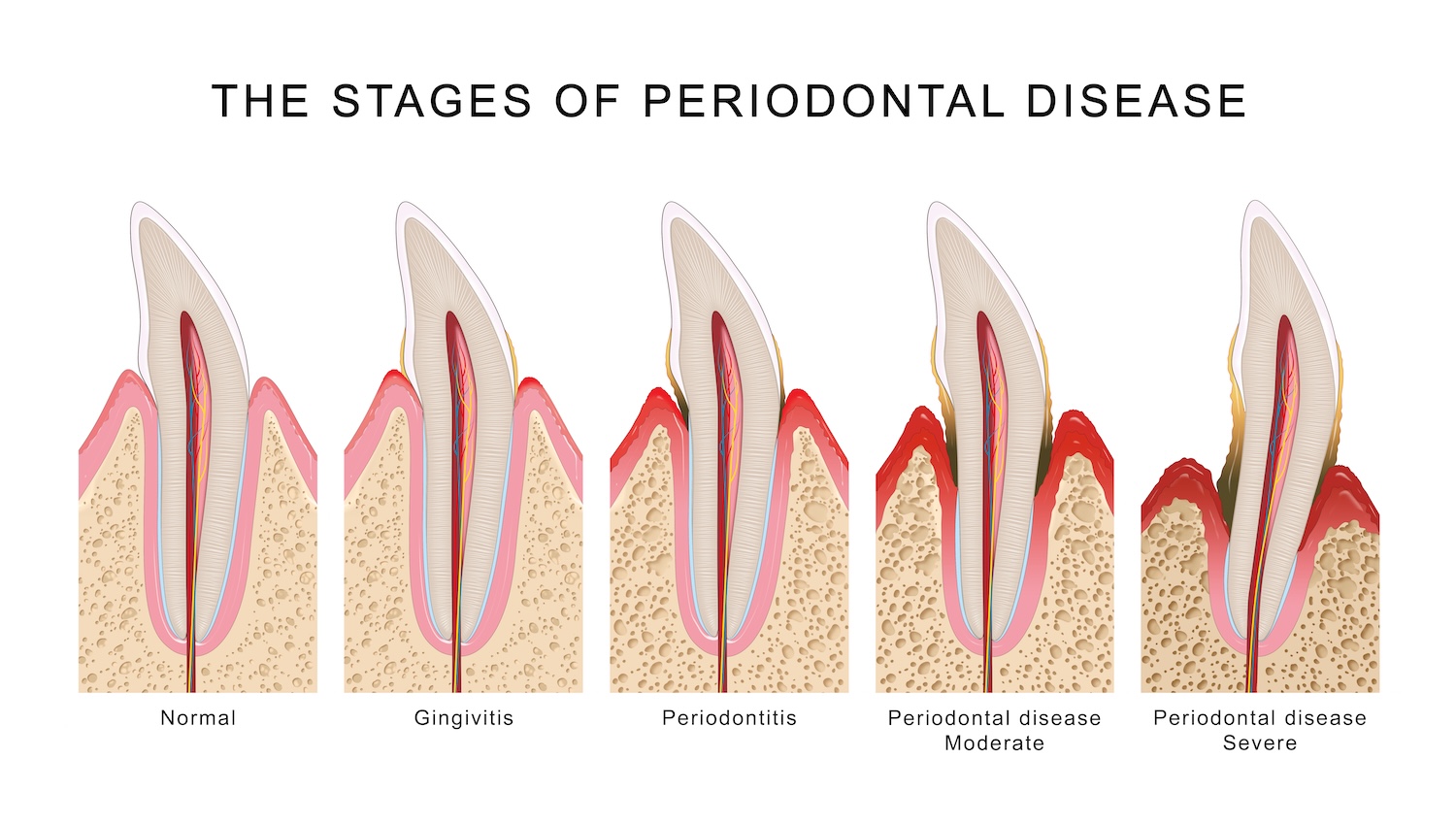Gum Disease Stages: What to Watch For
March 24, 2025 9:00 am

If your gums bleed when you brush, don’t brush it off—literally. That little bit of blood might be your first sign that something’s up. Gum disease is one of the most common oral health problems, but many people don’t realize they have it until it’s already progressed.
It doesn’t always hurt. In fact, it often doesn’t. That’s why knowing the stages can make all the difference in protecting your long-term oral health.
Stage One: Gingivitis (Mild, But Sneaky)
Gingivitis is the earliest form of gum disease, caused by plaque buildup along the gumline. You may notice some redness, puffiness, or bleeding—especially when flossing or brushing.
But, here’s the good news: this stage is still reversible. With daily brushing, flossing, and a good professional cleaning, your gums can bounce back pretty quickly. But if ignored, things get more complicated.
Stage 2: Early Periodontitis
When plaque is left to linger, it hardens into tartar and creeps below the gumline. As inflammation continues, the gums begin to pull away from the teeth, creating small pockets where bacteria can hide and thrive.
This stage might come with more noticeable symptoms—chronic bad breath, sensitivity, occasional tenderness, or more frequent bleeding.
Treatment usually involves scaling and root planing, also called non-surgical periodontal therapy. This is a deep cleaning that removes plaque and tartar from beneath the gums. It’s more thorough than a regular cleaning and helps stop the infection from spreading.
You’ll also need to come for more frequent cleanings, called periodontal maintenance visits. These are specialized cleanings every 3–4 months to keep gum disease from progressing. Think of them as your gum care pit stops—more often than standard cleanings, but critical to keeping things stable.
Stage 3: Moderate to Advanced Periodontitis
At this point, the infection affects the bone and connective tissue that hold your teeth in place. Gums may recede, and teeth can loosen or shift.
For some patients, a deep cleaning will still be part of the plan, but more advanced cases often require surgery. That may include:
Gum grafts: To restore receding tissue
Bone grafts: To rebuild lost jawbone
Flap surgery: To clean deeper pockets and reduce inflammation
After treatment, periodontal maintenance visits become essential. These visits allow your dentist and hygienist to monitor healing and prevent relapse.
So, What’s the Deal With Periodontal Pockets?
You’ve probably heard numbers called out during your exam—2s, 3s, maybe a 4. Those numbers are measuring periodontal pocket depth—the space between your gums and teeth.
1–3 mm is healthy.
4 mm is a red flag.
5 mm or more? That’s a pocket too deep for your toothbrush or floss to clean.
These deep pockets become a hiding spot for bacteria, making regular maintenance essential. Catching them early can keep your smile from slipping into deeper trouble.
Support for Your Gums at Serene Dentistry in McKinney, TX
If your gums bleed when you floss, or your dentist has mentioned “pockets,” don’t panic—but don’t ignore it either. Gum disease is common, but it’s also manageable with the right plan. At Serene Dentistry in McKinney, TX, Dr. Jay, Dr. Roberts, Dr. Middleton, and Dr. Morrison take a thoughtful, supportive approach to gum health. Whether you’re in the early stages or need ongoing maintenance, we’re here to help you feel confident in your smile again—one gentle visit at a time.
Contact UsCategorised in: Gum Health
